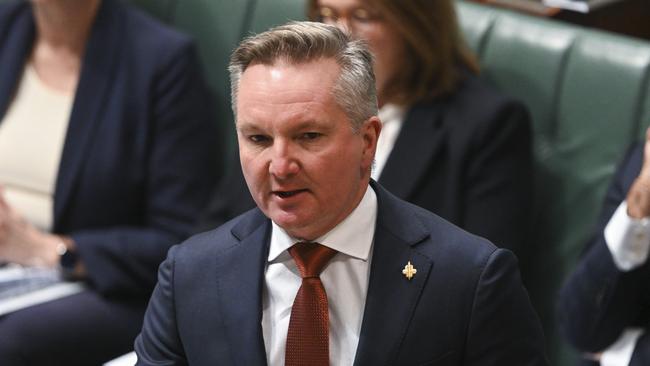Power pain: long winter of high energy costs
Households and businesses face extended power price pain after the energy market operator revealed the cost of electricity rose 31 per cent in the three months to June.

Households and businesses face extended power price pain into next year after the energy market operator revealed the cost of generating electricity rose 31 per cent in the three months to June.
As families on the east coast are hit with sky-high winter electricity and gas bills, the Australian Energy Market Operator on Thursday will announce the second-highest wholesale price spike on record for a June quarter.
The huge quarter-to-quarter jump in wholesale electricity prices – a key component in determining how much household and business bills will rise next year – was recorded despite price caps on coal and gas and the strengthening of global supply chains following Russia’s invasion of Ukraine.
While the Albanese government’s price caps and $3bn energy bill relief package for five million households averted worst-case projections for record east coast electricity prices, there are growing fears that Labor’s renewables revolution is moving too slowly.
Energy and Climate Change Minister Chris Bowen conceded in remarks on Wednesday that reaching the government’s 2030 renewable energy target was a hard task.
Anthony Albanese’s target to have more than 82 per cent of renewable electricity in the grid by 2030 is under mounting pressure as power companies struggle to get solar, hydro, wind and transmission infrastructure in place to shift from coal-fired power.
With the 2024 default market offer based on wholesale electricity prices, AEMO said it was hopeful that power-generation prices could be lowered in the second half of the year.
Electricity futures prices for 2023-24 were similar to or slightly higher than the prior three months while prices for 2025 and 2026 rose from the March quarter. Elevated electricity prices would intensify pressure on households struggling with soaring inflation and a rapid increase in interest rates, and erode public support for green energy reforms.
The Prime Minister – who promised before last year’s election to slash $275 annually from household power bills by 2025 – will come under pressure from the Coalition over the cost-of-living crisis and energy prices when MPs return to Canberra on Monday following the winter break.
In a speech to the Australian Business Council in Japan on Wednesday, Mr Bowen reassured Japanese investors that Australia was a reliable partner after questions had been raised about supply. Later, he also addressed the government’s 2030 target.
“It’s a little fashionable in Australia to say it’s too hard, that we won’t lift from 35 per cent renewable energy today to 82 per cent by 2030,” Mr Bowen said in Japan. “I completely acknowledge it’s a big job with many road bumps on the way. If it was easy, someone else would have done it. You mentioned offshore wind; yes, we are racing ahead at a rapid speed because we need to, we’re catching up. We’re several years behind, we should have started five years ago, maybe 10. The second-best time to start is today.”
Mr Bowen said Labor was “fixing the mess left by the opposition whose energy policy chaos saw 4GW of dispatchable power leave the grid and only 1GW put back in by delivering the urgent upgrade to our grid and capacity investment scheme”.
He said this would “bring on more affordable, reliable, renewable energy across the country”.
Opposition Treasury spokesman Angus Taylor said energy costs were up by almost 14 per cent over the past year, as the June quarter inflation data revealed an overall annual increase of 6 per cent.
“This is real pain for Australians,” Mr Taylor said. “This is real pain that is being felt at the checkout, when they pay their bills and in everything we do. Make no mistake about it – prices are going up, not down.”
Asked about the inflationary impacts of a 22 per cent increase in gas prices and 10 per cent rise in electricity prices, Jim Chalmers said price caps and the energy bill relief package had taken “some of the edge off that”.
“The increase in energy prices would have been worse if we hadn’t taken the action that we’ve taken. You can’t spray around tens of billions of dollars in every direction because that makes inflation worse,” the Treasurer told 2GB.
“When it comes to the bill relief, that will flow for people’s winter bills largely.”
AEMO’s quarterly energy report said that while the average cost of producing electricity was down 60 per cent from last year’s peak, it was still the second highest June quarter on record.
The average wholesale electricity price across the National Electricity Market was $108 per megawatt hour compared with $264/MWh a year earlier.
AEMO reform delivery executive general manager Violette Mouchaileh said the year-on-year fall represented less volatile market conditions, improved generation availability and higher renewables output.





To join the conversation, please log in. Don't have an account? Register
Join the conversation, you are commenting as Logout